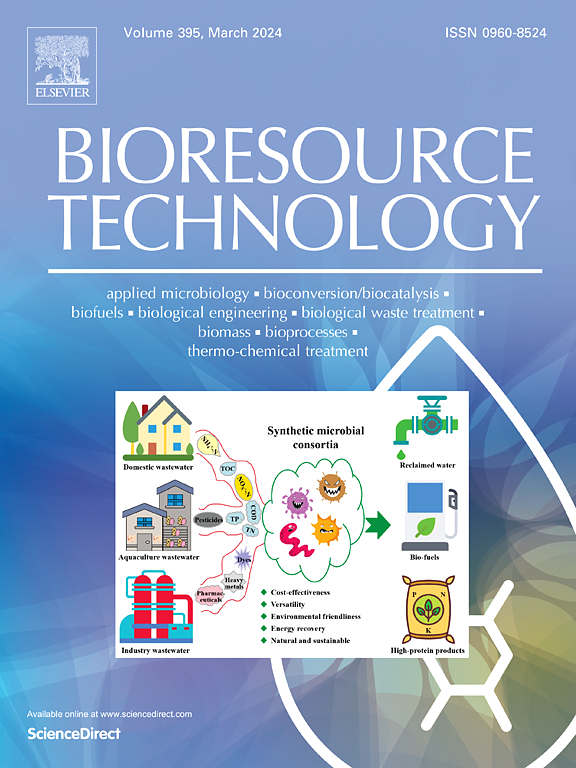Integration of spectroscopic techniques and machine learning for optimizing Phaeodactylum tricornutum cell and fucoxanthin productivity
IF 9.7
1区 环境科学与生态学
Q1 AGRICULTURAL ENGINEERING
引用次数: 0
Abstract
The development of sustainable and controlled microalgae bioprocesses relies on robust and rapid monitoring tools that facilitate continuous process optimization, ensuring high productivity and minimizing response times.
In this work, we analyse the influence of medium formulation on the growth and productivity of axenic Phaeodactylum tricornutum cultures and use the resulting data to develop machine learning (ML) models based on spectroscopy. Our culture assays produced a comprehensive dataset of 255 observations, enabling us to train 55 (24+31) robust models that predict cells or fucoxanthin directly from either absorbance or 2D-fluorescence spectroscopy.
We demonstrate that medium formulation significantly affects cell and fucoxanthin concentrations, and that these effects can be effectively monitored using the developed models, free of overfitting. On a separate data subset, the models demonstrated high accuracy (cell: R2 = 0.98, RMSEP = 2.41x106 cells/mL; fucoxanthin: R2 = 0.91 and RMSEP = 0.65 ppm), providing a practical, cost-effective, and environmentally friendly alternative to standard analytical methods.

整合光谱技术和机器学习优化三角褐指藻细胞和岩藻黄素产量。
可持续和可控的微藻生物过程的发展依赖于强大和快速的监测工具,这些工具有助于持续的过程优化,确保高生产率和最小化响应时间。在这项工作中,我们分析了培养基配方对无菌三角褐指藻(Phaeodactylum tricornutum)培养物生长和生产力的影响,并使用所得数据开发基于光谱的机器学习(ML)模型。我们的培养分析产生了255个观察结果的综合数据集,使我们能够训练55个(24 + 31)健壮的模型,直接从吸光度或2d荧光光谱预测细胞或岩藻黄素。我们证明了培养基配方显著影响细胞和岩藻黄素浓度,并且这些影响可以使用开发的模型有效地监测,没有过拟合。在单独的数据子集上,模型显示出很高的准确性(细胞:R2 = 0.98,RMSEP = 2.41x106个细胞/mL;岩藻黄素:R2 = 0.91和RMSEP = 0.65 ppm),为标准分析方法提供了实用、经济、环保的替代方法。
本文章由计算机程序翻译,如有差异,请以英文原文为准。
求助全文
约1分钟内获得全文
求助全文
来源期刊

Bioresource Technology
工程技术-能源与燃料
CiteScore
20.80
自引率
19.30%
发文量
2013
审稿时长
12 days
期刊介绍:
Bioresource Technology publishes original articles, review articles, case studies, and short communications covering the fundamentals, applications, and management of bioresource technology. The journal seeks to advance and disseminate knowledge across various areas related to biomass, biological waste treatment, bioenergy, biotransformations, bioresource systems analysis, and associated conversion or production technologies.
Topics include:
• Biofuels: liquid and gaseous biofuels production, modeling and economics
• Bioprocesses and bioproducts: biocatalysis and fermentations
• Biomass and feedstocks utilization: bioconversion of agro-industrial residues
• Environmental protection: biological waste treatment
• Thermochemical conversion of biomass: combustion, pyrolysis, gasification, catalysis.
 求助内容:
求助内容: 应助结果提醒方式:
应助结果提醒方式:


